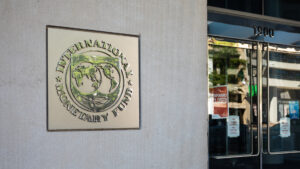OPEC+ decided to increase its production output for August this week. The cartel is aiming to meet short-term demand but remains concerned about creating a surplus in inventory later in 2025, which could lead to more pressure on oil prices.
The decision aligns with President Trump’s push for lower oil prices and could pressure oil producers to ramp up production worldwide.
OPEC+ Boosts Production
OPEC+ surprised oil markets after announcing its decision to increase production output of 548,000 per day starting August. This decision marks a faster reversal of voluntary cuts that were made in 2023. ⁽¹⁾
The OPEC+ group, comprising heavyweight producers Russia and Saudi Arabia, alongside Algeria, Iraq, Kazakhstan, Kuwait, Oman and the United Arab Emirates, met digitally on July 5th. They were expected to increase output by a smaller amount of 411,000 barrels per day.
The decision could be positive for consumers and a win for Trump, who campaigned on a pledge to cut fuel costs. But it also poses risks for producers, from America’s shale heartlands to OPEC’s own members. ⁽²⁾
The group cites a steady global economy and low oil inventories as reasons for its confidence. US crude inventories at Cushing are declining, and diesel stockpiles have dropped significantly. Summer demand in the northern hemisphere also supports the move, as fuel consumption typically peaks during this season. ⁽³⁾
How Producers Could be Impacted
The production hike presents both positive and negative impacts. For the positive, consumers could benefit from lower oil prices, leading to eased fuel costs. On the negative side, US shale companies, especially ones who supported Trump in his re-election, might reduce profits and expect to drill fewer oil wells in 2025 due to the decline in prices. ⁽⁴⁾
The actual supply impact on oil markets could be smaller than expected, as Saudi Energy Minister Prince Abdulaziz bin Salman pressured countries that previously exceeded their production quotas to forego their share of the hikes. Russia and Iraq are showing some signs of compensation, though Kazakhstan continues to exceed its quotas. ⁽⁵⁾
Saudi Arabia’s Pricing Strategy
Despite the risk of future surplus inventory, Saudi Arabia remains confident on its strategy. On July 6, Saudi Aramco raised the premiums it charges for its flagship crude to customers in its key Asian market by more than traders had anticipated. The move suggests Riyadh is not worried about a market downturn yet, even though Saudi Arabia needs oil prices above $90 per barrel to fund its ambitious economic transformation plans, according to the IMF. ⁽⁶⁾
However, financial pressures are mounting. The kingdom faces a growing budget deficit, forcing cuts to some of Crown Prince Mohammed bin Salman’s major projects. If prices fall too low, Saudi Arabia may reconsider its strategy and reduce supply again. ⁽⁷⁾
Market Reaction

Source: TradingView showing Brent Crude price performance in 2025
Oil prices have been declining since the ceasefire of the Israel-Iran war, which since has sent oil prices down by more than 10% over the past two weeks.
Goldman Sachs and JPMorgan oil analysts have been forecasting a further slide towards $60 this year as Chinese consumption falters and Trump’s trade tariffs cast a shadow across the global economy. The IEA (International Energy Agency) had forecasted a surplus of 1.5% of global oil consumption by Q4 2025, even before OPEC+’s latest decision. ⁽⁸⁾
Looking Ahead
OPEC+ is planning to review another output increase of 548,000 barrels per day for September during its next meeting in August. If the output increase plan gets approved, it would reverse the 2.2 million barrels per day cut from 2023. However, the group’s ability to manage supply and demand could depend on global developments, including the current tariffs that were imposed by Trump and central bank decisions. ⁽⁹⁾



